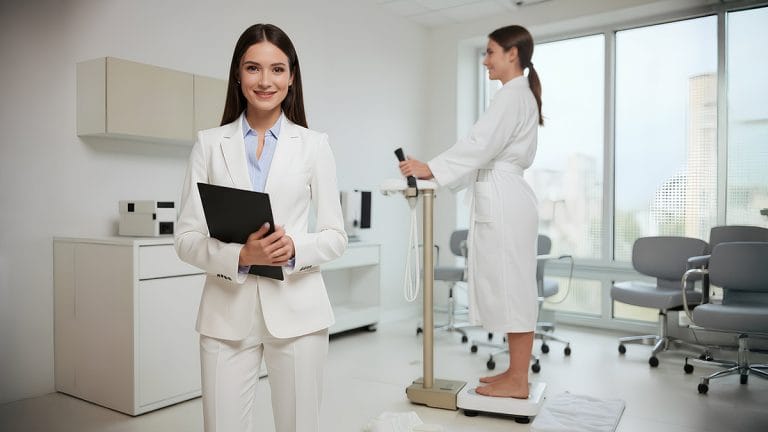
Best Practices for BIA Testing: A Professional Guide to Ensuring Data Accuracy and Consistency
Bioelectrical Impedance Analysis (BIA) is a scientific method that accurately analyzes body composition by measuring the body’s resistance to a safe, low-level electrical current. To ensure that each measurement reflects the body’s true state, following standardized BIA test guidelines is paramount. A consistent testing protocol minimizes errors caused by temporary physiological changes (like hydration and body temperature), thus guaranteeing the accuracy, consistency, and comparability of the data.
This guide provides a detailed overview of best practices for BIA testing, covering both pre-test preparation and in-test posture.
Pre-Test Preparation: Standardized Testing Conditions
For the most reliable results, we recommend conducting the test under the following conditions:
- Test on an Empty Stomach
Why: After a meal, blood flow to the digestive system increases, which temporarily decreases the body’s overall bioimpedance. This state can take 2-4 hours to normalize, so testing immediately after eating can skew the analysis. - Use the Restroom Before Testing
Why: BIA technology calculates various metrics based on precise body weight. The weight of bladder and bowel contents is transient and can interfere with the accurate calculation of body fat and other components. - Wear Light, Consistent Clothing
Why: Heavy clothing adds to the weight reading, directly impacting the calculation of percent body fat and all other weight-based metrics. For comparable results over time, always test in similar lightweight attire. - Avoid Testing Immediately After Strenuous Exercise
Why: Exercise elevates body temperature, heart rate, and blood flow. The body dilates blood vessels to cool down, and these physiological shifts decrease bioimpedance, leading to measurement discrepancies. - Avoid Testing Immediately After a Shower or Sauna
Why: Similar to exercise, hot showers or saunas raise surface body temperature and cause vasodilation, altering fluid distribution and conductivity, which impacts the accuracy of the impedance measurement. - (For Women) Avoid Testing During the Menstrual Cycle
Why: Hormonal fluctuations during the menstrual cycle, particularly of progesterone, can cause the body to temporarily retain more water. This increase in total body water and weight will affect the body composition analysis.
In-Test Posture: Ensuring Correct Current Pathways
Correct posture is critical for ensuring data integrity during the measurement.
- Must Be Barefoot
Why: Socks and stockings act as insulators, severely impeding the electrical current’s ability to pass through the footplate electrodes. This will lead to a failed measurement or highly inaccurate results. - Keep Arms Apart, Not Touching the Torso
Why: If the arms touch the sides of the body, it creates an electrical “shortcut” for the measurement current. This will artificially lower the measured impedance of the upper limbs and trunk, resulting in a calculated percent body fat that is lower than the actual value. - Extend Arms Straight While Holding Handgrips
Why: Electrical current naturally follows the path of least resistance. Bending the arms shortens the path the current travels through the upper limbs, which will again lead to an erroneously low impedance reading and affect the accuracy of the final analysis.
Conclusion: Clear Guidance is a Mark of Professionalism
As a provider of advanced body composition analysis solutions, we understand the importance of data accuracy. By providing your end-users with these clear, professional testing guidelines, you not only help them obtain the most reliable health data but also demonstrate the professional quality and value of your product, building long-term customer trust.
